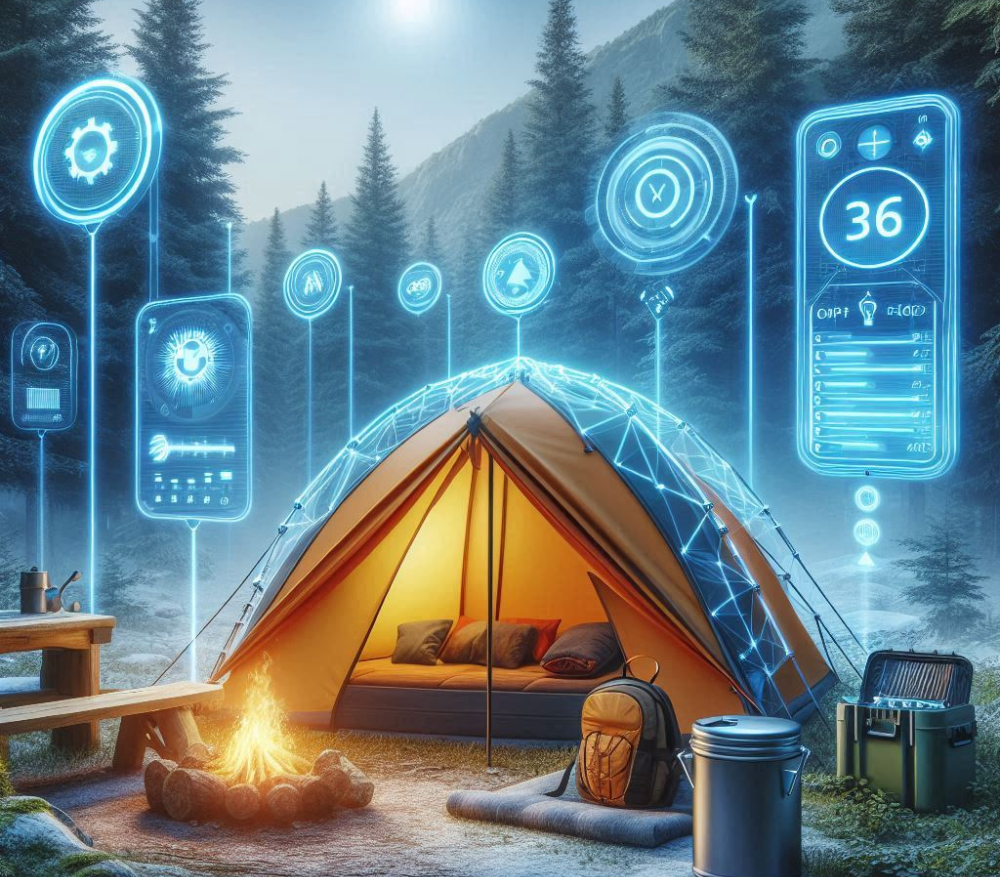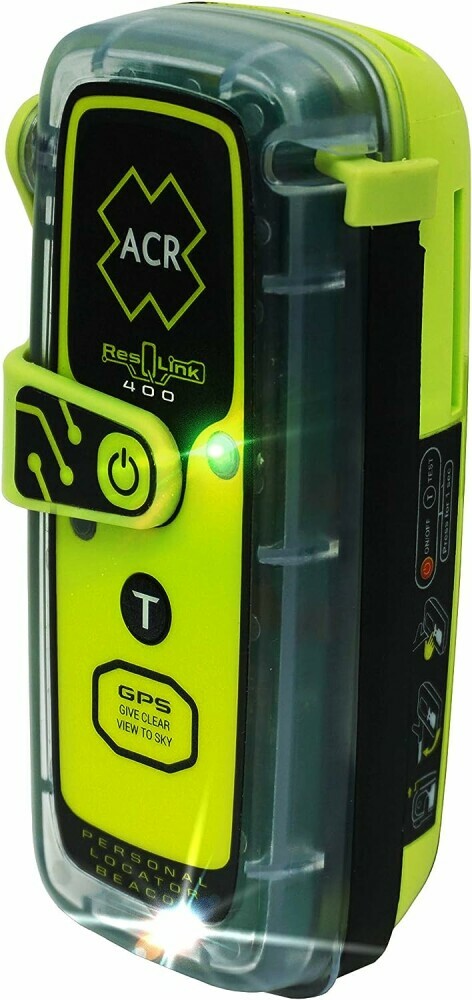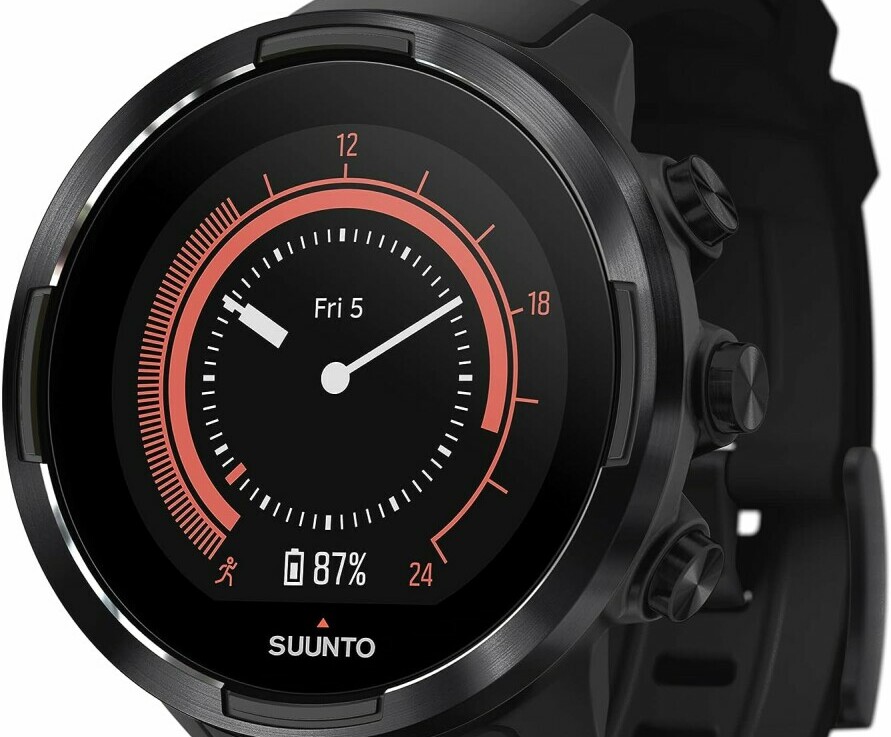Affiliate Disclosure: I earn commissions if you shop through the links below at no additional cost to you.
Last Updated on July 4, 2024 by Jeremy
Today, I’m going to be talking about an evolution that’s shaking up the great outdoors: smart technology. Gone are the days when outdoor gear meant just a tent, a compass, and a map. We’ve stepped into an arena where traditional equipment is being augmented, or even replaced, by innovative tech solutions designed to enhance outdoor adventures.
I’m here to help you understand why picking up a piece of smart outdoor gear might just be the best thing for your next trip into the wild. We’ll dive into the marriage of circuitry and solitude, explaining not just the ‘how,’ but the ‘why’ behind this trend. Think about it: Wouldn’t it be great to have a gadget that ensures you’re safe, offers topographic maps at a glance, and helps preserve the environment?
Now, this isn’t just about convenience; it’s also about expanding possibilities. Whether you’re a seasoned mountaineer or a casual camper, smart gear promises to provide a safer, more enjoyable, and environmentally responsible experience. And trust me, embracing this wave of innovation doesn’t mean leaving the spirit of the outdoors behind.
But, you may wonder, what about the dangers lurking behind those trees or in the unpredictable weather patterns? This is where our conversation shifts into an even more crucial topic: safety and preparedness. So my question to you today is, are you ready to see how smart technology not only fits into but enhances outdoor activities?

The Impact of Smart Tech on Safety and Preparedness
When we’re talking about heading outdoors, your safety should always come first. That’s exactly where smart technology is making waves. Think about the new wave of outdoor gear equipped with GPS, weather alerts, and the ability to send distress signals. It’s not just about convenience; it’s a matter of life and death in some cases.
You’re going to find out about emergency beacons that climbers or hikers use, which now come with high-tech features like satellite messaging. These features can be lifesavers when cell service is non-existent. Imagine being stranded and having the ability to signal for help with precise coordinates. That’s the power of smart tech in the palm of your hand.
Of course, I’m not just blowing smoke here. There are real, impactful stories out there. Take, for instance, hikers who’ve been rescued because their smart gear sent out a signal when they couldn’t. Or avalanche victims located in time due to their smart sensors. These case studies show us how crucial the integration of technology into outdoor gear can be for safety and preparedness.
Innovation Spotlight: Wearable Tech and Navigation Tools
Next, I’m going to be talking about the game changers in outdoor excursions – wearable tech and cutting-edge navigation tools. When you’re all geared up with the latest gizmo, you’re not just equipped, you’re empowered. Picture this: tracking your hike with precision while monitoring your heart rate, or maybe even sending distress signals with a few button presses.
The smartwatch has evolved way beyond a timepiece. It’s a compass, a biometric monitor, a weather station, and sometimes even your personal trainer, all wrapped around your wrist. You’re going to find out about offerings from brands like Garmin, Suunto, and Apple that bring a whole suite of sensors and data to your outdoor ventures.
Garmin
Garmin is a heavyweight in the world of GPS technology and wearable devices. Known for its reliability and precision, Garmin’s products are designed for outdoor enthusiasts and professionals alike. The Garmin Fenix series, for example, is a multi-sport GPS watch that offers advanced navigation features, heart rate monitoring, and built-in maps. It’s perfect for hikers, runners, and adventurers who need a robust and versatile tool. Garmin’s devices are also equipped with features like barometric altimeters, gyroscopes, and solar charging capabilities, making them indispensable for off-the-grid expeditions.
Check it out on Amazon by clicking on the photo below:
Suunto
Suunto is another brand that has carved out a niche for itself in the wearable tech market. Originating from Finland, Suunto combines Scandinavian design with rugged functionality. Their watches, such as the Suunto 9 Baro, are known for their durability and long battery life, which is essential for extended outdoor trips. Suunto’s devices offer comprehensive activity tracking, weather insights, and route navigation. Their FusedTrack™ technology extends battery life without compromising GPS accuracy, making Suunto an excellent choice for ultramarathoners and long-distance trekkers.
To see this brand and pricing on Amazon, click picture below:
Apple
Apple might not be the first name that comes to mind for rugged outdoor gear, but their Apple Watch series has proven to be a versatile companion for many adventurers. The latest Apple Watch models feature comprehensive health tracking, including ECG and blood oxygen monitoring. With built-in GPS, altimeter, and compass, these watches are capable navigational aids. The integration with iOS allows for seamless use of apps like Gaia GPS and AllTrails, turning your Apple Watch into a powerful tool for both casual hikes and serious expeditions. Plus, with cellular connectivity, you can stay in touch even when your phone is out of reach.
These brands not only offer advanced technological features but also focus on user-friendly interfaces and robust build quality, ensuring that you can rely on them in the most demanding environments.
In terms of navigation, GPS technology has taken the lead. What was once a bulky accessory can now fit snugly in your pocket or even integrate into your watch. Smartphones, once considered a liability in the wilderness, now function as powerful navigational aids with the right app and accessories.
Traditional navigation hasn’t been left entirely behind, though. It’s still crucial to understand map reading and compass skills because, let’s face it, batteries die and gadgets can fail. Carry these skills as a backup, but enjoy the convenience and accuracy that today’s tech has to offer.
Next up, you’re going to dive into the world of eco-friendly advancements. Imagine charging your devices with the sun while leaving a minimal carbon footprint. Solar-powered gear is not only innovative but responsible – it’s respecting the great outdoors while taking full advantage of what it offers.
Eco-friendly Advancements: Smart Sustainable Outdoor Gear
You might think that merging technology with nature could lead to more waste and environmental degradation, but that’s not necessarily the case. Innovators are focusing on creating smart outdoor gear that not only enhances your experience but also preserves the places you love to explore. Eco-friendly advancements in outdoor tech mean we’re seeing a shift towards sustainable practices even in the gear we use.
Think about solar-powered gadgets, for instance. These days, portable solar panels can power everything from your smartphone to your camp stove. It’s a game change for backpackers and campers seeking to minimize their carbon footprint. Plus, solar chargers are becoming more efficient, lighter, and cheaper, making them a go-to for energy needs while off the grid.
Amazon’s overall pick of solar power chargers is featured here:
Materials science isn’t sitting this dance out, either. We’re in the midst of an eco-revolution where biodegradable components and environmentally friendly manufacturing techniques are becoming the norm. From water bottles that break down harmlessly over time to apparel made from recycled plastics, smart technology is leading the charge in gear that’s kind both to you and the environment.
This commitment to sustainability underlines a central value of outdoor culture: respecting and preserving natural environments. By introducing gear that’s rechargeable, durable, and made with eco-conscious materials, we’re reducing the amount of waste that can mar our natural playgrounds. It’s not just about enjoying nature, it’s about ensuring future generations can do the same.
Now, this isn’t to say such advancements are solely about conservation. They can actually enrich your outdoor experiences as well. In the next section, I’m going to show you how smart gear can not only reduce your environmental impact but also heighten the fun and comfort when you’re on the trails or pitching your tent.
Smart Gear for Enhanced Outdoor Experience
I’m going to let you in on a secret: smart technology isn’t just changing how we live indoors; it’s revolutionizing our outdoor experiences too. Take, for example, augmented reality (AR). This isn’t just about gaming; it’s about bringing a new depth to hiking and nature trails. With AR apps like Seek by iNaturalist, you can identify plants and wildlife, explore historical facts, or even follow interactive trail maps right on your smartphone.
Imagine setting up camp and, instead of fumbling with manual controls or dim flashlights, you have intelligent lighting systems like the BioLite BaseLantern. This smart lantern not only adjusts to the ambient conditions but can also be controlled via your smartphone. It even functions as a power hub, ensuring your gadgets are charged by harnessing solar power throughout the day.
For the sports enthusiasts, technology is synonymous with improving performance. Smart sportswear such as the Under Armour UA RUSH collection can monitor biometrics, giving you real-time feedback on your physical state. This gear, embedded with mineral-infused fabric, reflects your body’s energy to help improve endurance and strength.
High-tech binoculars like the Bushnell Forge 15×56 can record video and take photos, allowing you to capture stunning wildlife moments. For anglers, smart fishing rods like the FishBrain Smart Fishing Rod connect to an app that analyzes water conditions and tells you when you’re about to get a bite.
Smart outdoor gear can also enhance your connection with nature. Take the Solio Solar Charger – it ensures your devices stay powered by harnessing the sun’s energy, allowing you to stay connected without leaving a carbon footprint. Or the Garmin inReach Mini, a compact satellite communicator that keeps you connected with two-way messaging and SOS capabilities, ensuring safety even in the most remote locations.
In my opinion, the key is to choose something that resonates with you, that doesn’t take away from your experience but adds to it. Whether it’s a smartwatch, smart lighting, or AR apps, these tools are about enriching nature’s marvels, not overshadowing them. You can always adjust your approach down the road, but for now, it’s all about finding that sweet spot between technology and the great outdoors.
Connectivity Off the Grid: Communication Technologies
When you’re miles away from civilization, you want to be sure you can reach out if the unexpected happens. Modern outdoor explorers are embracing smart devices that make isolation less risky. I’m going to outline how staying connected can be a game-changer.
Satellite messengers and emergency beacons are becoming a staple for adventurers. They’re not just for peace of mind; these devices can, quite literally, be lifesavers. You’re going to find out about how wilderness communication has evolved from simple flares to advanced GPS tracking and SOS signaling.
Now, what is a big concern for most is the potential for tech to disrupt the natural escape of the outdoors. I get it – you go to nature to unplug, not to chat on social media. But it doesn’t have to be an either-or situation. Smart tech can be designed to lie dormant until it’s needed, ensuring you can send an SOS even when deep in the backcountry.
There’s a lot of opportunity in the development of low-impact, background tech that offers a safety net without the constant ping of a notification. Choosing products that focus on essential connectivity, rather than diverting gadgets, aligns with the values of many outdoor enthusiasts who favor a minimalist approach.
The Future of Outdoor Exploration with Smart Tech
I’m going to sketch out a picture of tomorrow’s treks and climbs. As tech advances, so too does our outdoor gear. It’s not just about having a fancier gadget—it’s about integrating technology that enhances our interactions with nature while preserving the spirit of adventure.
You’re going to find out about innovations on the horizon—from textiles that adapt to your body’s needs to drones that scout trails. In my opinion, these advancements will redefine how we plan, execute, and remember our expeditions.
That’s the strategy I like to leverage; using tech as an ally, not a crutch. Our future gear might include materials that heal themselves or devices that provide real-time weather and terrain data, making every journey safer and more informed.
Don’t worry too much about tech overshadowing the raw beauty of nature. Choose something that resonates with you—gear that supports rather than detracts from your experience. There’s a lot of opportunity in tech that connects us to nature on a deeper level, like biofeedback equipment that gauges our environmental impact.

Your first attempt doesn’t need to be your last. Adaptability is key. We’ll see gear that learns from our behaviors, adjusting to our preferences and improving with each outing.
I really hope that you embrace these advancements, not as a means to an end but as tools to unlock new potentials in your outdoor journeys. So my question to you today is, how ready are you to take a step into the future with your gear?
Thanks for exploring the future of outdoor gear with me. Remember, the goal is to enhance your adventure, not hinder it. Keep that spirit of exploration alive, and I’ll see you on the trails.
Cheers!








In my view, the integration of smart technology into outdoor gear represents a significant evolution that offers substantial benefits. From enhancing safety and environmental responsibility to enriching the overall experience, these advancements can play a pivotal role in modern outdoor adventures. However, it is essential to approach this integration thoughtfully, ensuring that technology complements rather than replaces the core values and skills that define the outdoor experience. As we navigate this new frontier, maintaining a balance between innovation and tradition will be key to preserving the spirit of exploration and respect for the natural world.
It’s amazing to see that technology has invaded – in a manner of speaking – every side of our lives, including outdoor activities. it’s true that I didn’t have the connected watches but I did wear a watch when I went hiking. I didn’t think of Apple as a brand to go outdoor spontaneously; but as I am a fan of the brand, I’ll probably buy one!